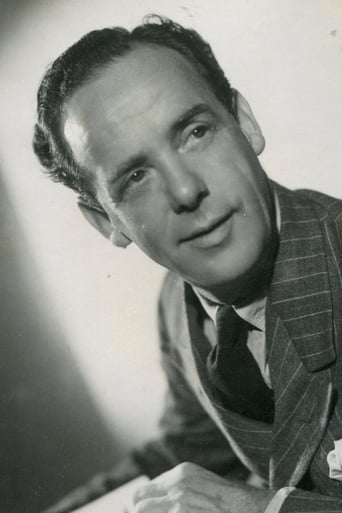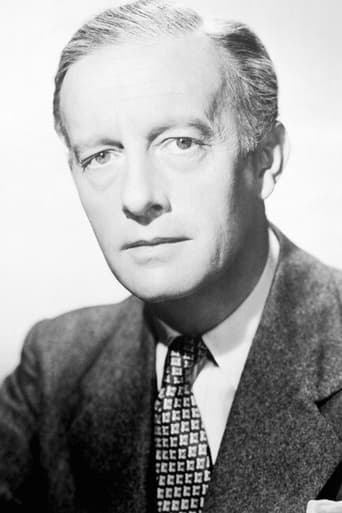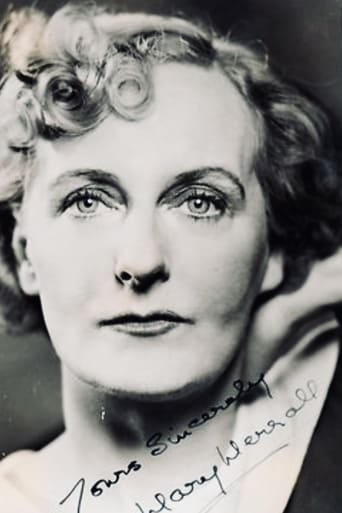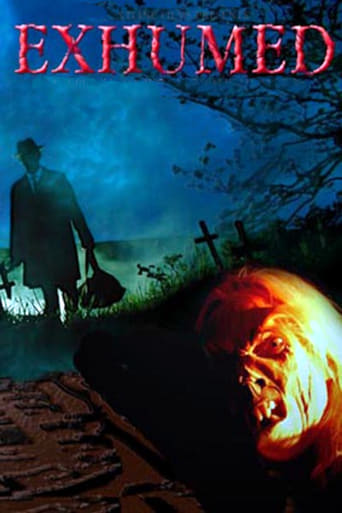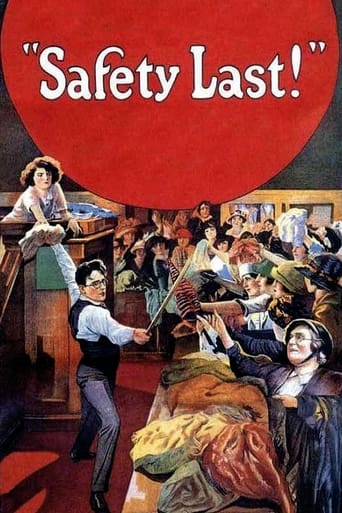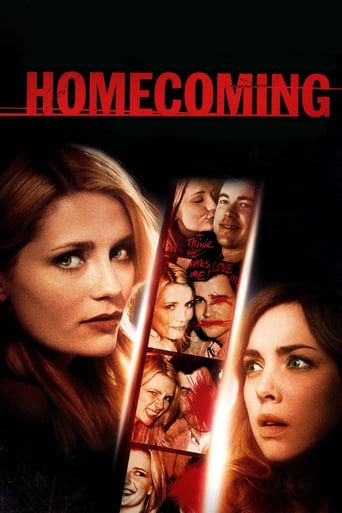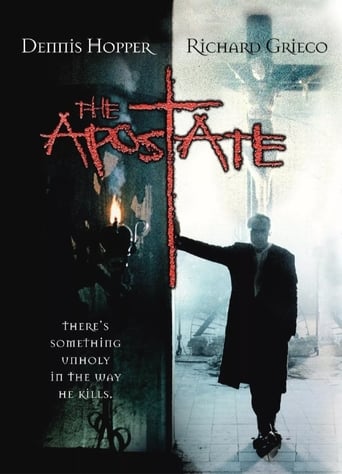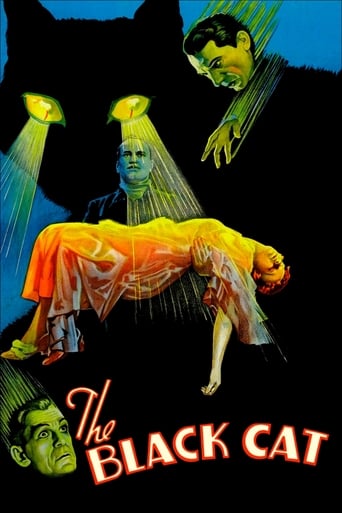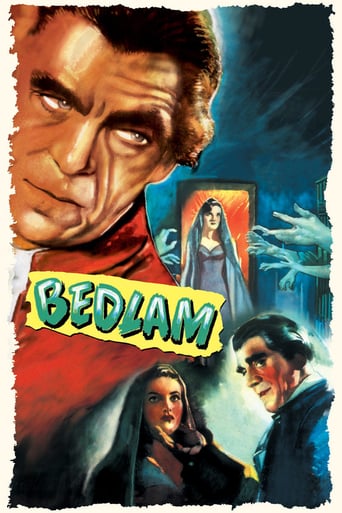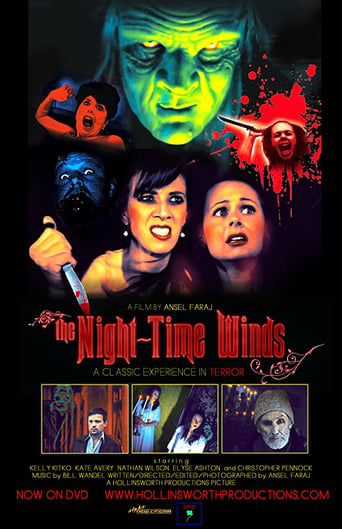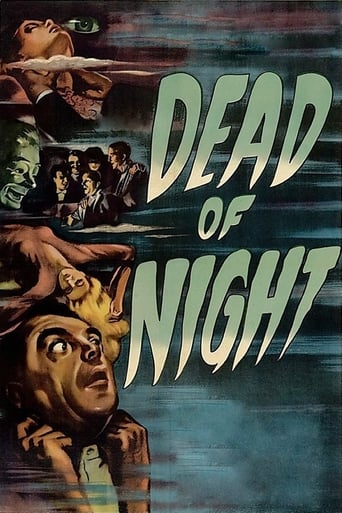
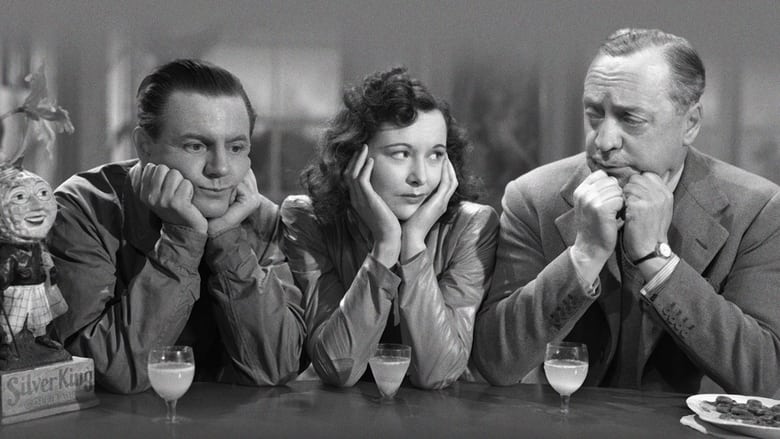
Dead of Night (1946)
Architect Walter Craig, seeking the possibility of some work at a country farmhouse, soon finds himself once again stuck in his recurring nightmare. Dreading the end of the dream that he knows is coming, he must first listen to all the assembled guests' own bizarre tales.
Watch Trailer
Cast
Similar titles
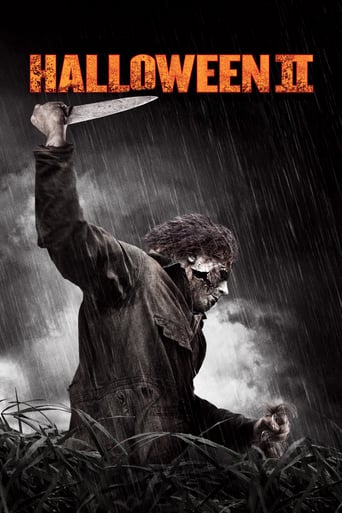
Reviews
Fresh and Exciting
It's a movie as timely as it is provocative and amazingly, for much of its running time, it is weirdly funny.
Exactly the movie you think it is, but not the movie you want it to be.
I didn’t really have many expectations going into the movie (good or bad), but I actually really enjoyed it. I really liked the characters and the banter between them.
Five stories are told:1. The Hearse Driver 2. The Christmas Party 3. The Haunted Mirror 4. The Golfer's Story 5. The Ventriloquist's DummyThe only story which is truly terrible is The Golfer's Story. It is awful, the story, the idea, the execution. The Hearse Driver is short, and pretty solid. The Christmas Party has a spooky flavor to it, and isn't a bad attempt. The Haunted Mirror is excellent. The Ventriloquist's Dummy is also excellent, and truly shines as the best story of the lot. If watching this film, either skip over The Golfer's Story or watch an edited copy where this story is cut out.
Dead of Night is just something like a nightmare. Romantic, funny, mysterious and terrifying dream. I think in this film is not the point in watching the future but the premonition and despair. This is one compound of confusing psychological experience, sharing stories by several protagonists, and at the end the main protagonist of all the experiences connected to one fantastic nightmare climax. Witnesses chronologically contain foreboding and vision, love and hallucination, "spicy" section and finally jealous split personality. Attempted murder leads to hilarious dreamy swirl in which intertwine all recounted horrors individually.Michael Redgrave as Maxwell Frere left the deepest impression as mad ventriloquist. All the other actors are episodic protagonists who dominate in their sequences. Group of director and screenwriter made sure that every story has a frightening honest tone.
The architect Walter Craig (Mervyn Johns) drives to a farmhouse in the countryside of London and he is welcomed by the owner, Eliot Foley (Roland Culver), who introduces him the psychiatrist Dr. Van Straaten (Frederick Valk), his friend Joan Cortland (Googie Withers), his young neighbor Sally O'Hara (Sally Ann Howes) and the race car driver Hugh Grainger (Antony Baird). Craig tells that he has the sensation of Déjà vu since he had had a nightmare with them in that house but one lady is missing. However Mrs. Foley (Mary Merrall) arrives completing the characters of his dream.The skeptical Dr. Van Straaten does not believe in supernatural but the guests tell supernatural events that they have lived. Grainger had a car accident and then a premonition that saved his life; Sally had met a ghost during the Christmas; Eliot and his wife had lived an evil experience with a haunted mirror; two golfers that loved the same woman and decide to dispute her in a game, but one of them dies and haunt the other; and Dr. Van Straaten tells the story of a ventriloquist with double personality that is dominated by his dummy. But when Dr. Van Straaten accidentally breaks his classes and the power goes out, the nightmare begins."Dead of Night" is an original horror tale that is certainly the source of inspiration to "The Twilight Zone", "Tales From The Crypt", "Vault of Horror", "Creepshow", "Tales From the Darkside: the Movie" where the screenplay discloses a main story and many segments. The final twist is totally unexpected and a plus in this little great movie. My vote is eight.Title (Brazil): "Na Solidão da Noite" ("In the Solitude of the Night")
This movie definitely holds a good deal of historical significance for a number of reasons. Horror had a golden age at the turn of the century, in both film and literature. While movie studios like Universal were churning out monster movies, there was a flood of British authors churning out high quality horror stories for a number of very successful pulp magazines. All of that came to a stop during WWII when Britain decided its' citizens had enough horror and banned the genre. This movie really was the comeback for British film horror and used several stories from those old pulps as its foundation. It's also, quite arguably, the first horror anthology and sets the standard that would be used in many movies to come over the next 50 plus years.Of course, with any anthology, it's sometimes difficult to judge the movie as a whole because we tend to remember high points and low points in a movie. This stands out even more in an anthology when we have good segments and weaker segments. This film begins with a "wraparound story" that connects all of the segments together. Though this is so common now we barely register it, this is the beginning of that framing device. We start with a man arriving at a house full of strangers, only to realize that he's experiencing incredible deja vu as he has dreamt them over and over and knows what events are to come. The first story, "The Hearse Driver" is the shortest, almost too short to even be effective in any way. It is very reminiscent of the sort of horror story that would become wildly popular in EC Comics and later works like TALES FROM THE CRYPT. A race car driver receives a premonition of his death with a creepy hearse driver announcing "there's room for one more". I think had the movie been made ten years later, the driver would have been dripping with shock theater creepiness, but here he's more understated.The next story is "The Christmas Party" where a young girl plays hide and seek in an old home, only to discover its' ghostly inhabitant. It's far too quaint and innocent for most modern audiences as its' style is very much turn of the century. It's the sort of tale we tell each other as small kids now around a campfire and not very effective for an adult audience. Even when put into the context of the 40s, it probably seemed tame even then.The middle is "The Haunted Mirror" which is one of the better stories in the anthology, mostly due to the performance of Ralph Michael as a rich man being haunted/ possessed by a mirror bought for him as a gift that seems to be showing him another world. What seems, at first, like a silly premise actually develops well into a fairly chilling story with some good acting.Then, the movie takes an extreme left turn with "The Golfing Story", a comedy about two men playing a round of golf for the hand of their love and the haunting that is created by one man's cheating. One thing to point out is that this movie was based very largely on those pulp horror anthologies from the turn of the century, most of which used Gothic and supernatural stories. The "haunted golf course" was a very popular and recurring motif in those stories, so this was sort of a natural story to tell British audiences during this time. The comedic tone is what throws people off more often than not and certainly put between the two segments that it is, it throws the movie's tonal progression off, but is an amusing story that holds my interest.The final story is the one that gets most of the attention. "The Ventriloquist's Dummy" is a remarkable story of a man's descent into dementia and the loss of identity, propelled by a great performance from Michael Redgrave. I'm not sure if this is the first example of that device being used, but this is certainly the touch mark for many stories that have been told since about a haunted dummy with its' own agenda. What could feel too familiar to a modern audience is still unique due to the great acting of Redgrave.The movie, at this point, has built up to a crescendo that comes to a finale in the wraparound story, as our main character reveals that he is drawn to commit murder. Then we get to the "twist ending" that I'll leave as somewhat of a surprise, though many have already mentioned.I can understand why some stories were trimmed at the time of release to make this movie shorter for American audiences. It does run a little long, but none of the stories are long enough to lose your attention. More than just a historical "landmark" film. This movie is still effective and interesting and probably one of the better horror movies to come out of the 40s.
